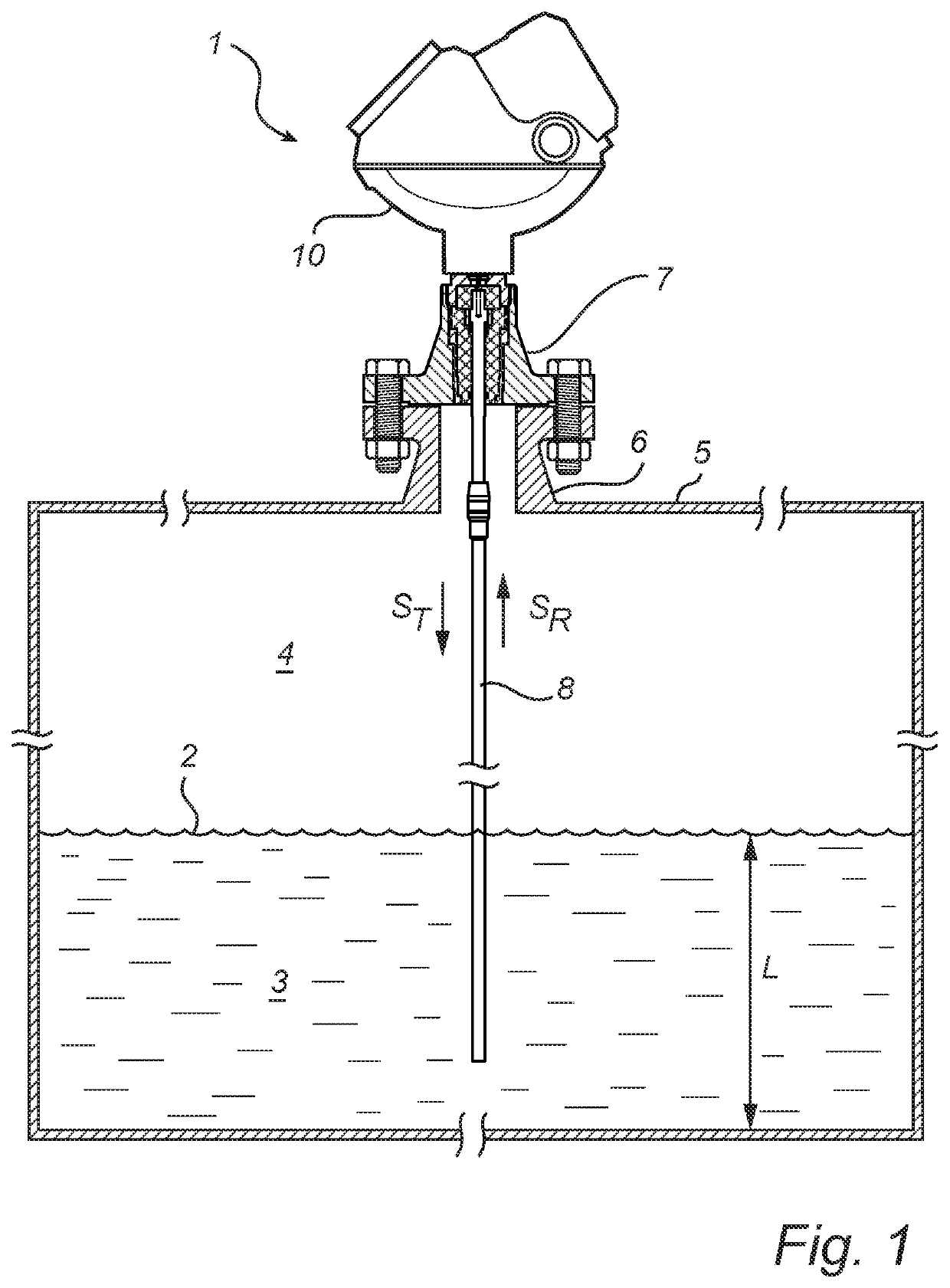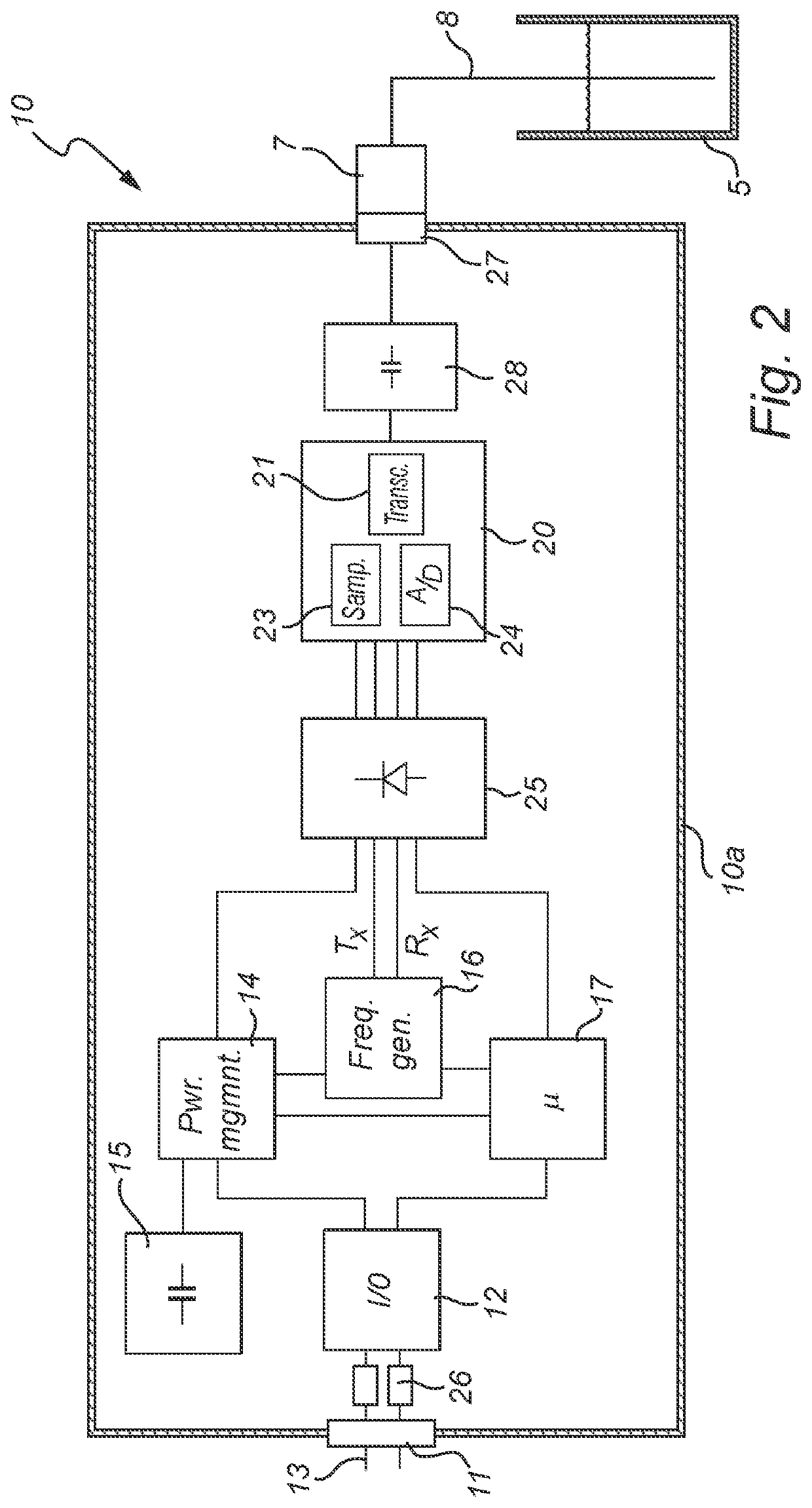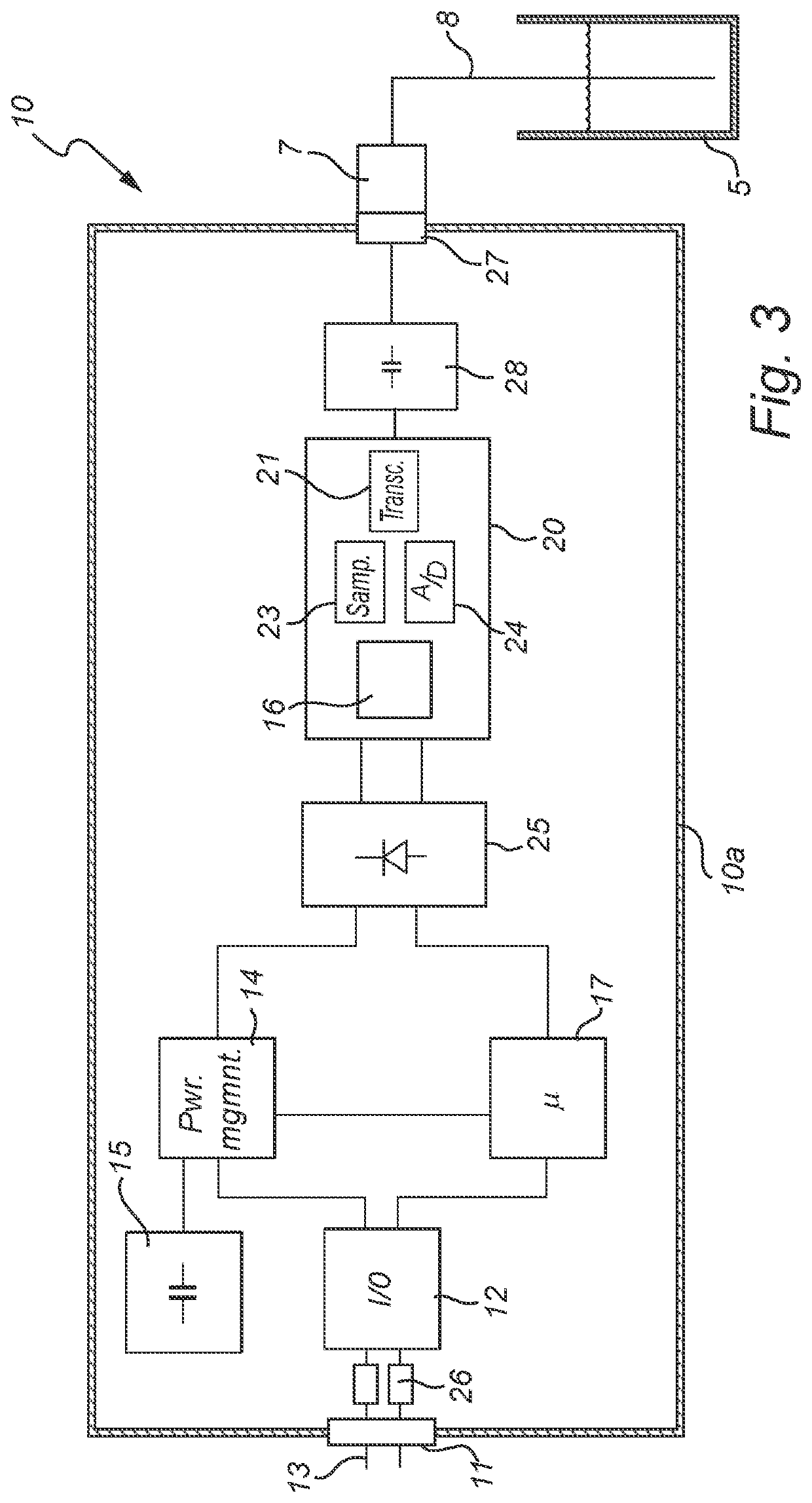Guided wave Radar level gauge with explosion proof housing and floating barrier
a radar level gauge and floating barrier technology, applied in the field of radar level gauges, can solve the problems of deteriorating energy budget, explosion proof, and insufficient explosion proof approach, and achieve the effect of reducing the number of signals passing through the barrier and larger voltage drop across the barrier
- Summary
- Abstract
- Description
- Claims
- Application Information
AI Technical Summary
Benefits of technology
Problems solved by technology
Method used
Image
Examples
Embodiment Construction
[0032]An embodiment of the present invention will now be disclosed with reference to a pulsed radar level gauge. In the context of radar level gauging, a pulsed system determines the distance to the surface of the product contained in the tank based on the difference in time (time-of-flight) between transmission of a pulse and reception of its reflection at the surface of the product. Most pulsed radar level gauge systems employ Time Domain Reflectometry (TDR), which provides a time expansion of the (extremely short) time-of-flight. Such TDR radar level gauge systems generate a transmit pulse train having a first pulse repetition frequency Tx, and a reference pulse train having a second pulse repetition frequency Rx that differs from the transmitted pulse repetition frequency by a known frequency difference Of. This frequency difference Af is typically in the range of Hz or tens of Hz.
[0033]The transmit pulse train is emitted by a propagating device towards the surface of a product ...
PUM
 Login to View More
Login to View More Abstract
Description
Claims
Application Information
 Login to View More
Login to View More - R&D
- Intellectual Property
- Life Sciences
- Materials
- Tech Scout
- Unparalleled Data Quality
- Higher Quality Content
- 60% Fewer Hallucinations
Browse by: Latest US Patents, China's latest patents, Technical Efficacy Thesaurus, Application Domain, Technology Topic, Popular Technical Reports.
© 2025 PatSnap. All rights reserved.Legal|Privacy policy|Modern Slavery Act Transparency Statement|Sitemap|About US| Contact US: help@patsnap.com



